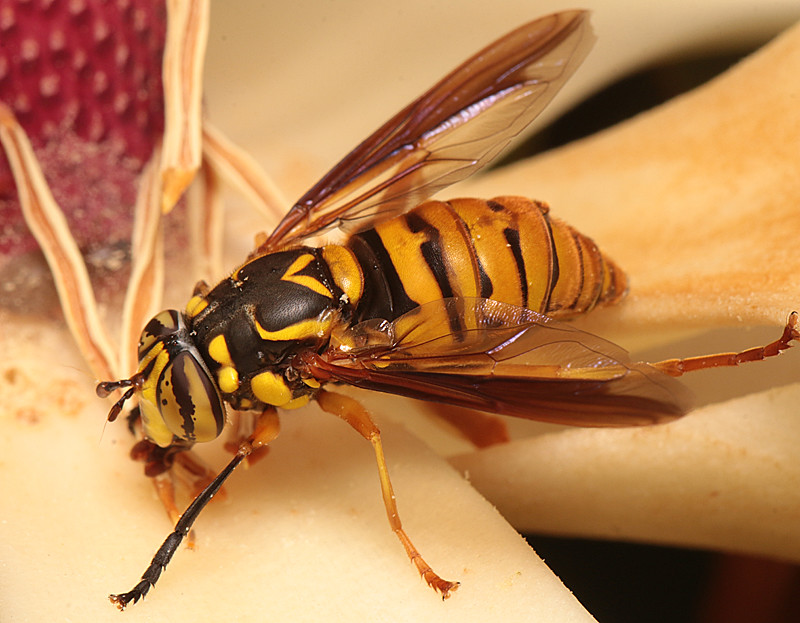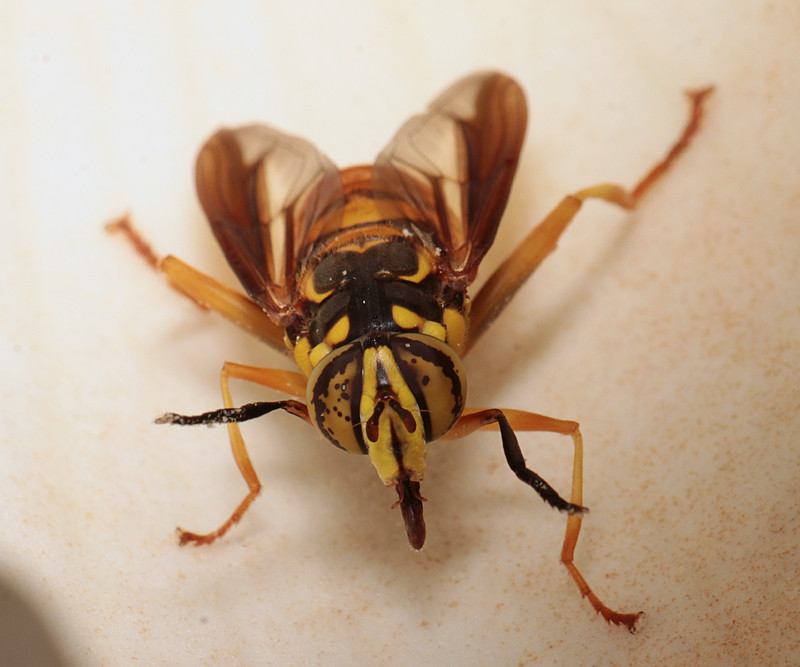Map Snapshot


2 Records
Seasonality Snapshot
Use of media featured on Maryland Biodiversity Project is only permitted with express permission of the photographer.
A Texas Hornet Fly in Prince George's Co., Maryland (6/5/2019). Determined by Martin Hauser/BugGuide.
View Record Details
Media by
Barbara Thurlow.
A Texas Hornet Fly in Prince George's Co., Maryland (6/5/2019). Determined by Martin Hauser/BugGuide.
View Record Details
Media by
Barbara Thurlow.
Source: Wikipedia
| Spilomyia alcimus | |
|---|---|

| |
| Scientific classification | |
| Domain: | Eukaryota |
| Kingdom: | Animalia |
| Phylum: | Arthropoda |
| Class: | Insecta |
| Order: | Diptera |
| Family: | Syrphidae |
| Subfamily: | Eristalinae |
| Tribe: | Milesiini |
| Subtribe: | Milesiina |
| Genus: | Spilomyia |
| Species: | S. alcimus
|
| Binomial name | |
| Spilomyia alcimus | |
| Synonyms | |
Spilomyia alcimus, the Broad-banded Hornet Fly, is an uncommon species of syrphid fly first officially described by Walker in 1849.[1] Hoverflies get their names from the ability to remain nearly motionless while in flight. The adults are also known as flower flies for they are commonly found around and on flowers, from which they get both energy-giving nectar and protein-rich pollen. The larvae are known as the short-tailed larvae suited for moist areas such as rot holes of trees.[4][5]
Distribution
[edit]References
[edit]- ^ a b c Walker, F. (1849). List of the specimens of dipterous insects in the collection of the British Museum. Part III. London: British Museum (Natural History). pp. 485–687.
- ^ Loew, H. (1864). "Diptera Americae septentrionalis indigena. Centuria quinta". Berliner Entomologische Zeitschrift. 8: 49–104. Retrieved 11 July 2021.
- ^ Johnson, C.W. (1921). "New Diptera from Texas and Mexico". Psyche: A Journal of Entomology. 28. Cambridge Entomological Club: 56–59. Retrieved 27 August 2021.
- ^ Rotheray, G.E. (1993). "Colour Guide to Hoverfly Larvae (Diptera, Syrphidae) in Britain and Europe" (PDF). Diperists Digest. 9: 155.
- ^ Skevington, J.H.; Locke, M.M.; Young, A.D.; Moran, K.; Crins, W.J.; Marshall, S.A (2019). Field Guide to the Flower Flies of Northeastern North America. Princeton Field Guides (First ed.). Princeton, New Jersey: Princeton University Press. p. 512. ISBN 9780691189406.

